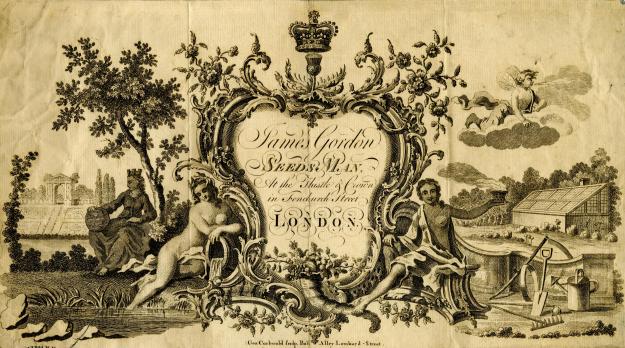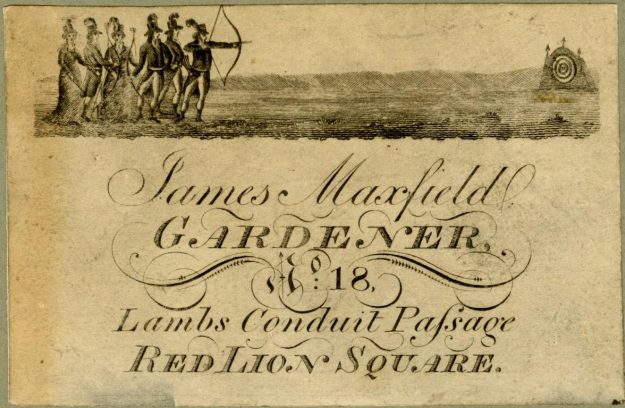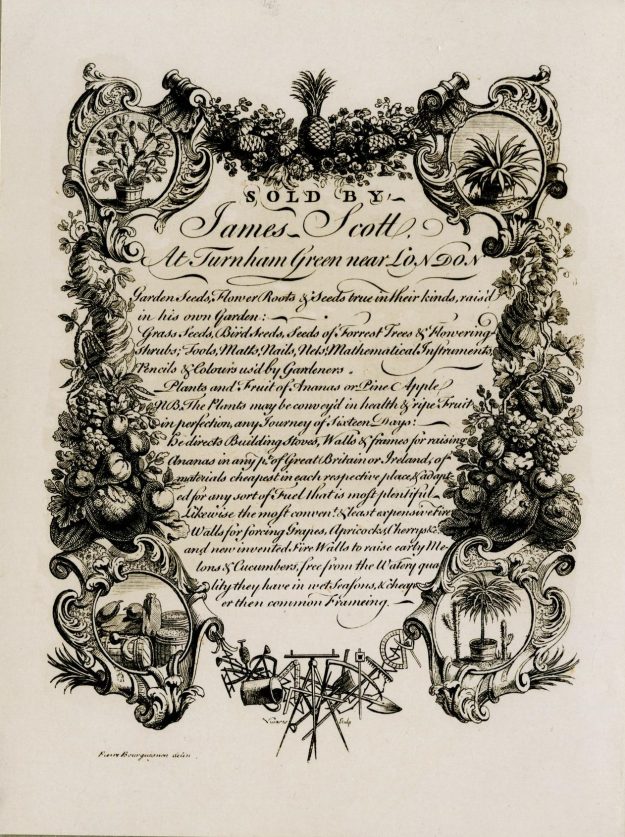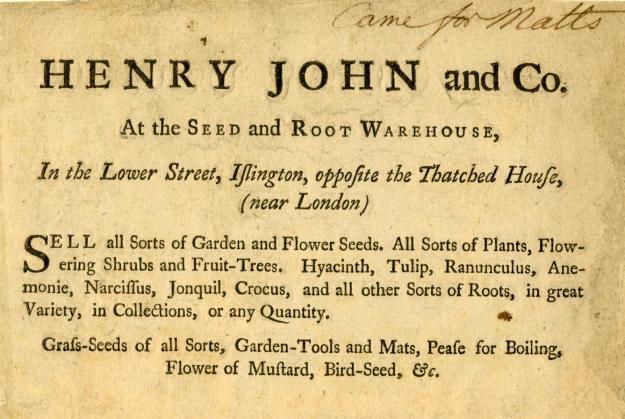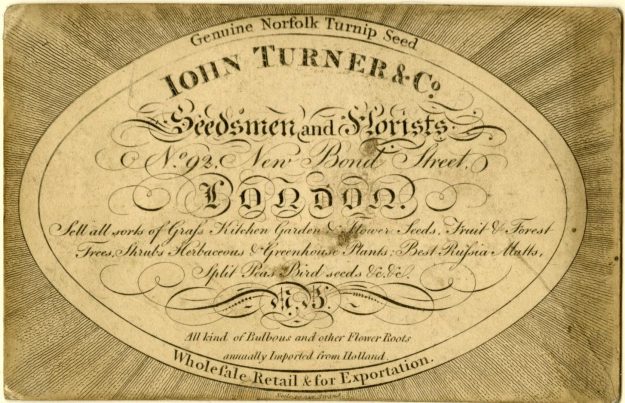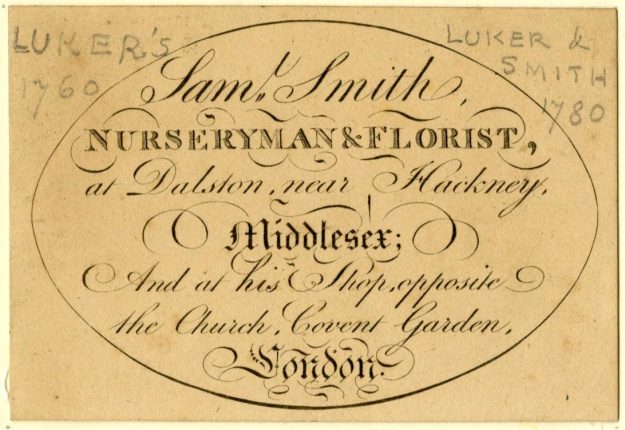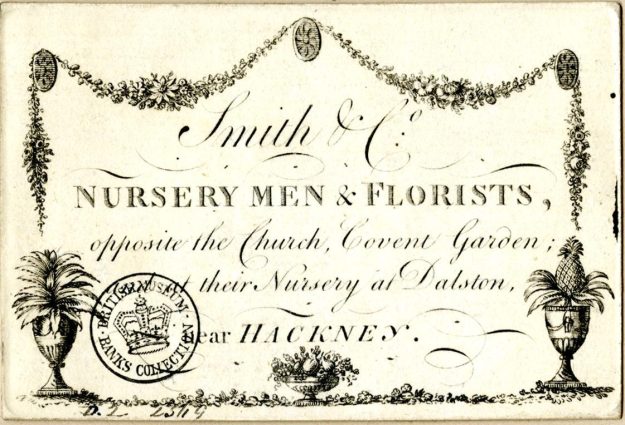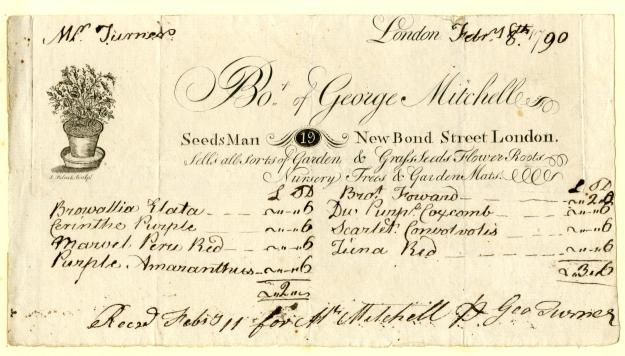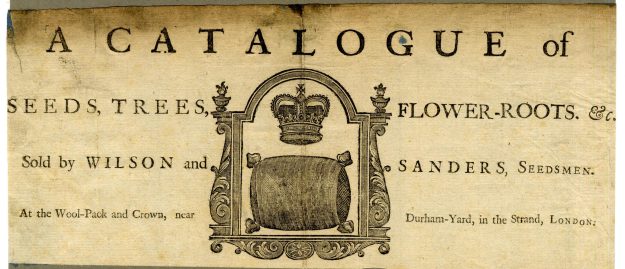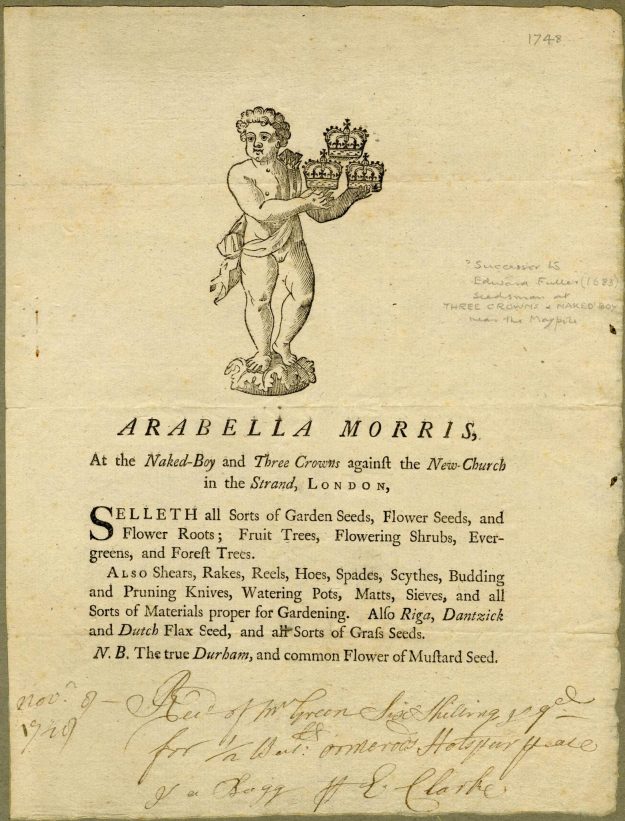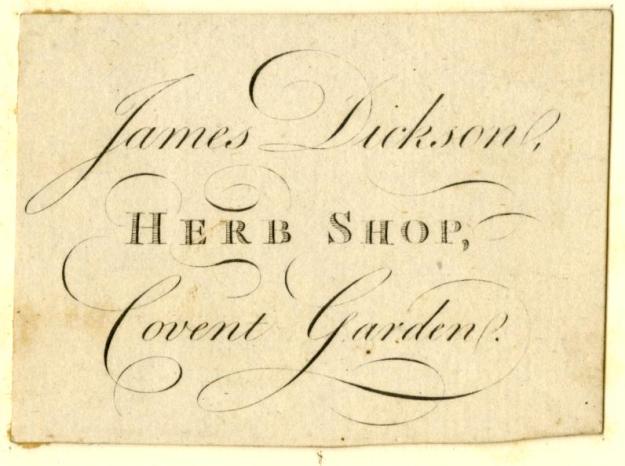
Gardeners 1978-9 Keith Arnatt 1930-2008 Tate Gallery © Keith Arnatt Estate
Posed in a front garden, this gardener stands as stiffly upright as the standard rose tree behind her. Dressed in a dark skirt and crisply laundered white shirt, her garden seems to reflect a similar preference for order and neatness, with its straight edged lawn and borders of roses and chrysanthemum, underplanted with regularly spaced clumps of the popular bedding plant, alyssum. This gardener’s love of flowers is further indicated by hanging containers adorning the pebble dashed wall of the house and a ceramic bowl of flowers placed in the centre of the living room window.
Gardeners (1978-79) is a series of forty black and white photographs by the conceptual artist Keith Arnatt (1930 – 2008), taken close to where he lived in Tintern, Monmouthshire. Arnatt’s odyssey in search of the vernacular garden records ordinary people in their gardens, ranging from rural plots and allotments to post war housing developments. As part of this process Arnatt also examines the connection between gardens and their owners, their relationship to the wider landscape, and what the domestic garden represents in our culture.
Trained at the Oxford School of Art and the Royal Academy, Arnatt’s performance based work was exhibited internationally in the 1960s. Characterised by wit and humour, his work included Self Burial (1969), where a sequence of photographs shows the artist gradually disappearing into the ground and Trouser – Word Piece (1972) where the artist is photographed with a sign hung from his neck, bearing the words ‘I’m a real artist’.
Arnatt began teaching at Newport College of Art in 1969, and from the mid-1970s he completed several photographic projects documenting people engaged in everyday activities. These included tourists visiting places of interest The Visitors (1974-76), taking their dogs for a walk, Walking the Dog (1976-79), and gardening Gardeners (1978-79).
Suburban gardens exist within a framework of uniformity, where rows of identical houses might typically have a square of ground at the front, and a rectangular plot at the back. Some of the gardens recorded by Arnatt sit comfortably within this convention, with their clipped hedges dividing each plot from those of the neighbours, furnished with lawns, flower beds and ornaments. Pictured with their owners, these well -tended gardens seem to echo the cottage gardens so admired by Gertrude Jekyll and Vita Sackville West.

Gardeners 1978-9 Keith Arnatt 1930-2008 Tate Gallery © Keith Arnatt Estate

Gardeners 1978-9 Keith Arnatt 1930-2008 Tate Gallery © Keith Arnatt Estate

Gardeners 1978-9 Keith Arnatt 1930-2008 Tate Gallery © Keith Arnatt Estate

Gardeners 1978-9 Keith Arnatt 1930-2008 Tate Gallery © Keith Arnatt Estate

Gardeners 1978-9 Keith Arnatt 1930-2008 Tate Gallery © Keith Arnatt Estate
Arnatt also examines those who depart from these conventions, like the man pictured with a pond made out of an old bath tub, its rim decorated with plastic storks and pot plants. Ornaments of animals and birds seem to interest Arnatt, perhaps a reminder that domestic gardens have replaced the natural landscape and displaced nature. He also seems to enjoy their incongruity. In one photograph, a woman poses in her garden holding a tiny dog, standing close to an outsize model of a frog placed on a tree stump and plastic ducks placed underneath the canopy of a diminutive tree.

Gardeners 1978-9 Keith Arnatt 1930-2008 Tate Gallery © Keith Arnatt Estate

Gardeners 1978-9 Keith Arnatt 1930-2008 Tate Gallery © Keith Arnatt Estate

Gardeners 1978-9 Keith Arnatt 1930-2008 Tate Gallery © Keith Arnatt Estate
Semi-rural gardens allow Arnatt to explore their relationship with the wider landscape. The boundaries between the rather wild looking garden of an older man and the woodland beyond are completely blurred, with no visible barrier between his roses and chrysanthemums, and the distant trees. However, at the very top of the frame, Arnatt has included washing hanging up to dry, a reminder we are viewing a cultivated space.

Gardeners 1978-9 Keith Arnatt 1930-2008 Tate Gallery © Keith Arnatt Estate
A tiny garden, dominated by a homemade rockery, is bordered by a wire fence to keep out sheep and rabbits from the adjoining field. Here, the fence represents a battle line, and gardener’s foot, planted firmly on the rockery, seems to indicate both pride in his collection of alpine plants, and a sense of victory over the forces that would attack his garden.
By way of contrast, a large garden, its lawn stretching out towards a field, seems adrift in the landscape. The hard edge of the patio and woman’s slightly awkward posture seems to amplify the sense of dislocation.

Gardeners 1978-9 Keith Arnatt 1930-2008 Tate Gallery © Keith Arnatt Estate

Gardeners 1978-9 Keith Arnatt 1930-2008 Tate Gallery © Keith Arnatt Estate
Some of Arnatt’s photographs reveal gardens with a more harmonious relationship with nature. By filling the frame with flowers, the man posed next to an expanse of daffodils is transported into a world that is almost bucolic.
A woman posed next to an open garden gate has repeated the planting of roses and other flowers on both sides of the stone wall, creating a pleasing sense of unity and flow between the cultivated space and the landscape beyond.

Gardeners 1978-9 Keith Arnatt 1930-2008 Tate Gallery © Keith Arnatt Estate

Gardeners 1978-9 Keith Arnatt 1930-2008 Tate Gallery © Keith Arnatt Estate
Perhaps it’s on the allotment where Arnatt’s gardeners seem most relaxed, preparing for the growing season, digging over the soil, or tending a bonfire. These gardeners are wearing clothes appropriate for gardening, but others in the series appear to have dressed up smartly for the occasion.

Gardeners 1978-9 Keith Arnatt 1930-2008 Tate Gallery © Keith Arnatt Estate

Gardeners 1978-9 Keith Arnatt 1930-2008 Tate Gallery © Keith Arnatt Estate

Gardeners 1978-9 Keith Arnatt 1930-2008 Tate Gallery © Keith Arnatt Estate

Gardeners 1978-9 Keith Arnatt 1930-2008 Tate Gallery © Keith Arnatt Estate

Gardeners 1978-9 Keith Arnatt 1930-2008 Tate Gallery © Keith Arnatt Estate

Gardeners 1978-9 Keith Arnatt 1930-2008 Tate Gallery © Keith Arnatt Estate
The success of Gardeners hinges on the people selected by Arnatt. Carefully placed in their gardens by the photographer, they anchor each composition and their presence creates a sense of substance and cohesion across the series. By their very nature, gardens are impermanent places, so forty five years after Gardeners was produced, these photographs also provide an important cultural record of ordinary gardens, and the people who made them, that could so easily have been lost and forgotten.
Further reading:
Keith Arnatt estate here
Keith Arnatt’s work at the Tate Gallery here

